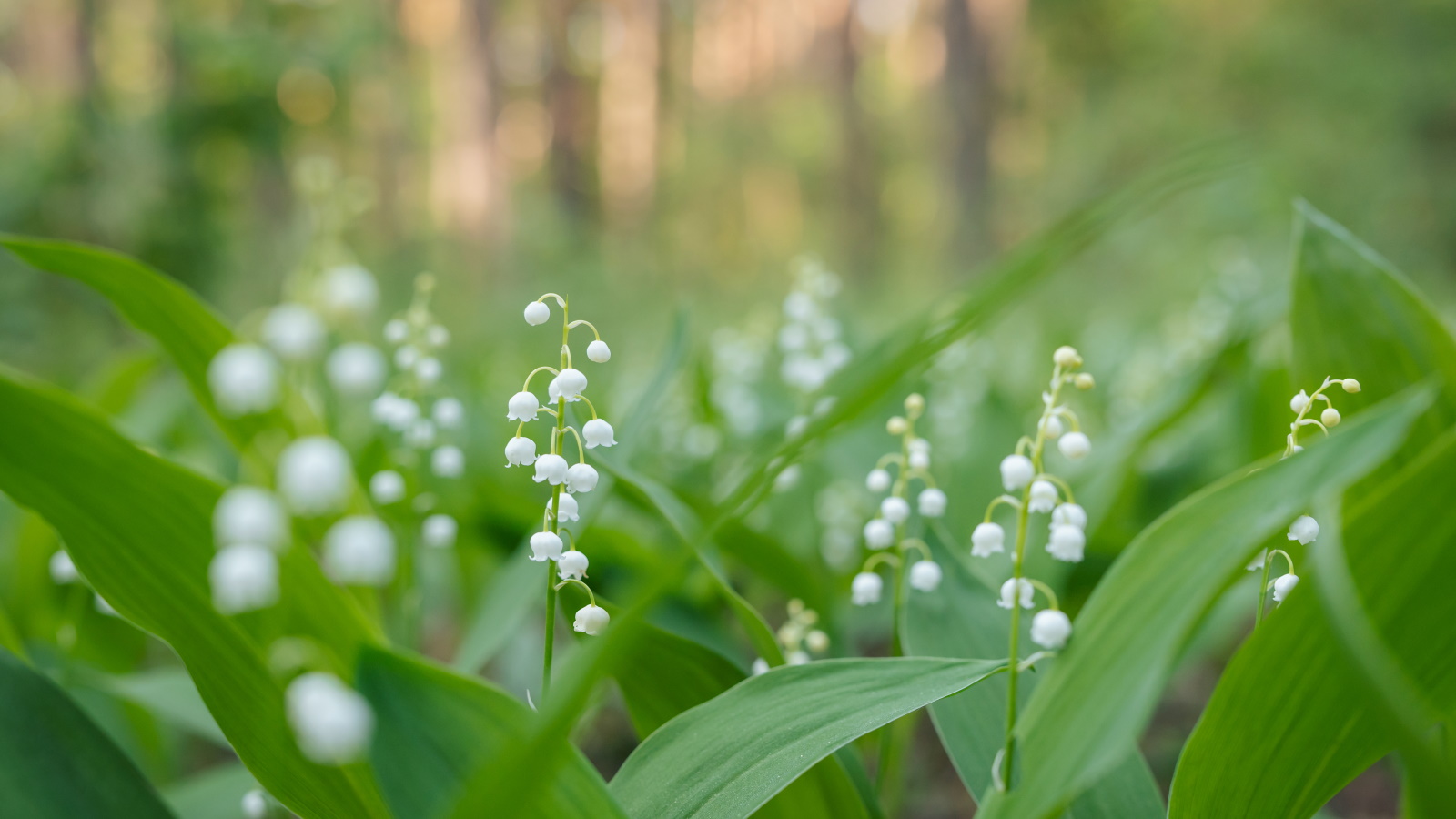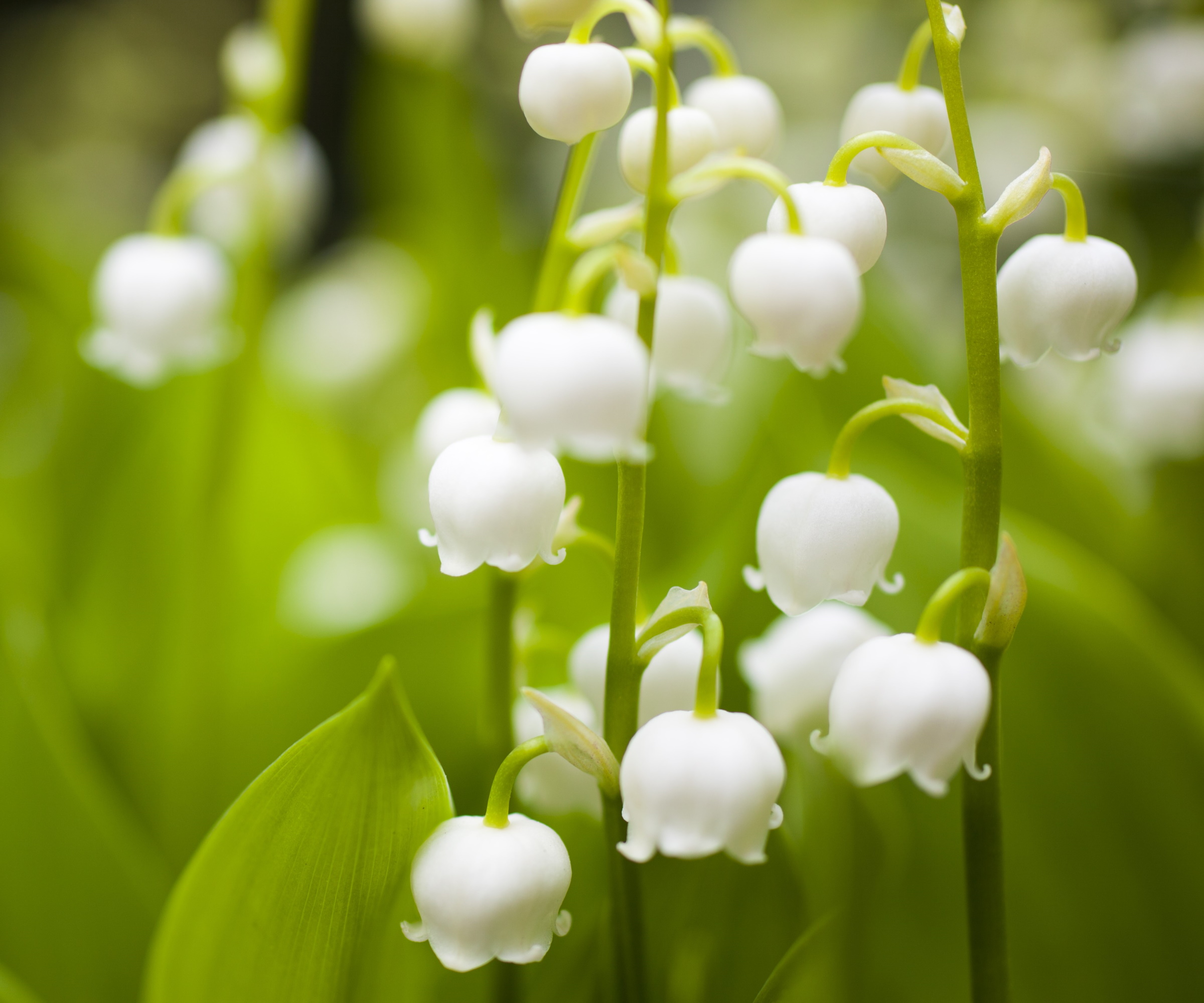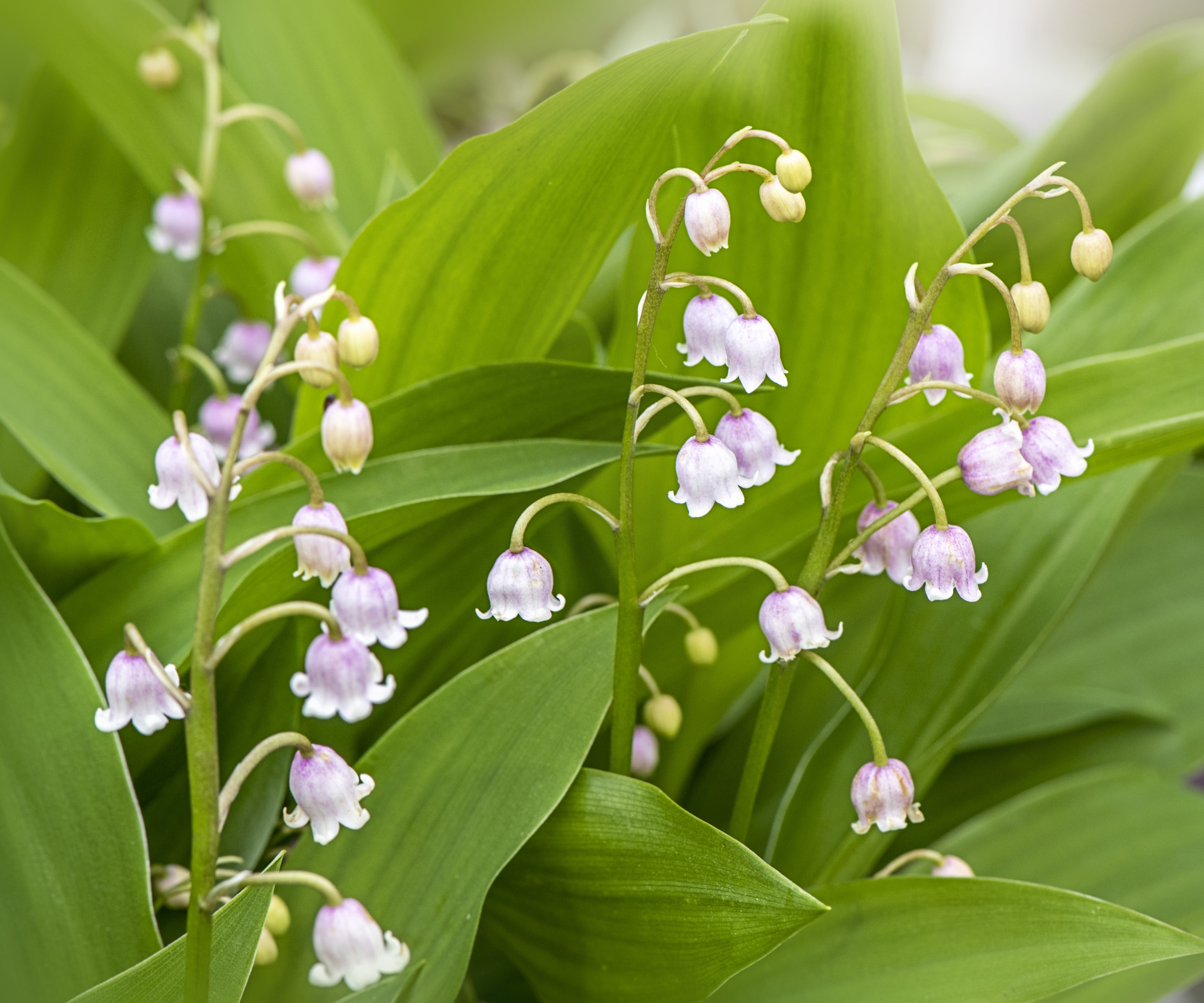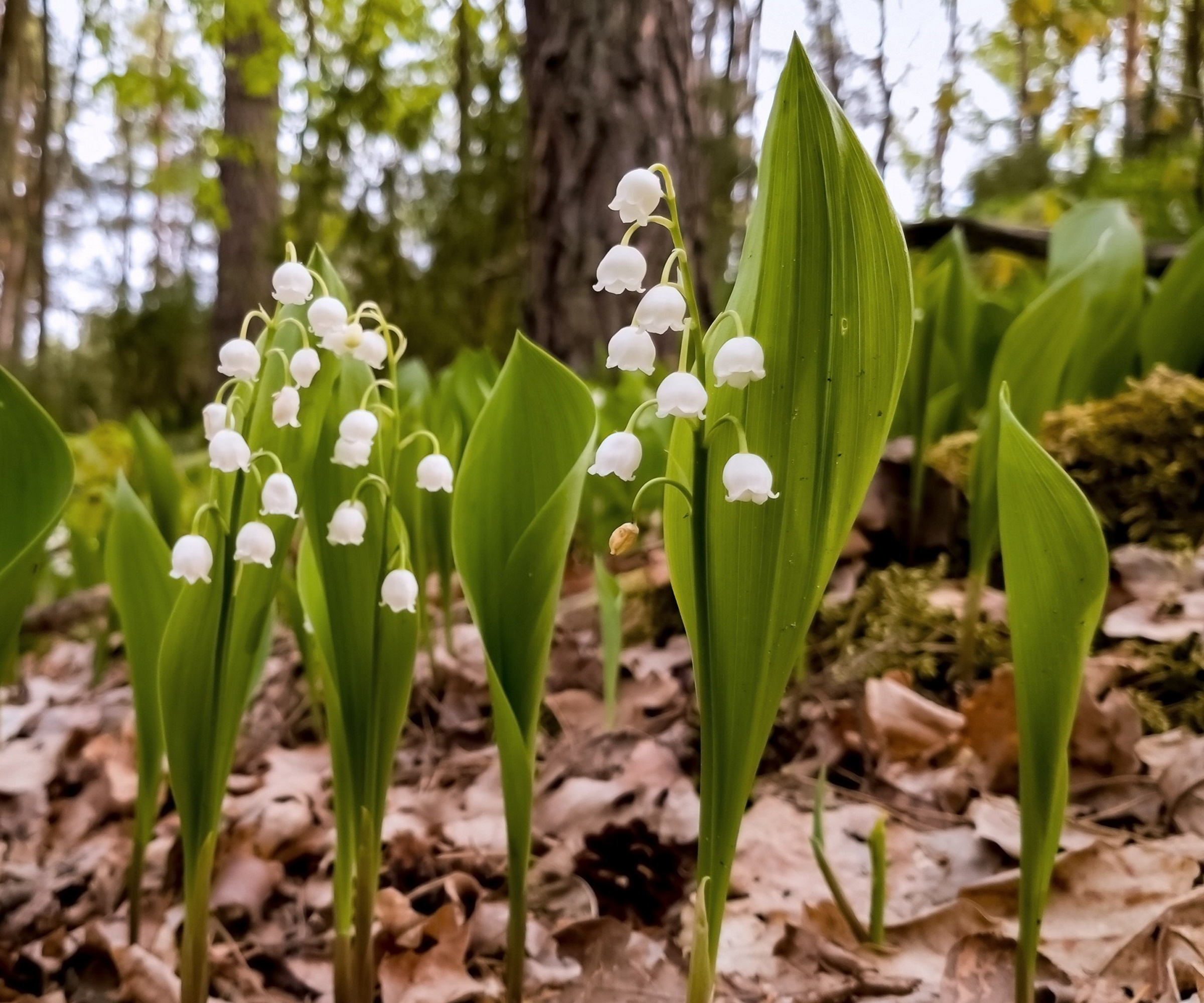
Lily of the valley, Convallaria majalis, is famed for its delicate bell-like flowers that produce a sweet scent so readily associated with springtime. Considered one of the best shade plants and best fragrant flowers, lily of the valley is a classic choice if you are seeking a spring-flowering perennial that will illuminate shady corners with white, perfumed blooms.
As rhizomatous perennials, lily of the valley plants return year after year, and their seasonal interest is not limited to spring. The white flowers and ovate green leaves are followed by red berries in the fall, extending interest in the garden borders up until the winter. Be warned, however, this vigorous perennial can take over, and is considered invasive in some regions and states. It is best to consult your local municipality for advice before planting.
Here, expert gardeners share important advice and information on how to grow lily of the valley in borders and containers, helping to add floral interest and scent to shady corners in any yard.

How to grow lily of the valley
Lily of the valley is a perennial plant that steals the show every spring, producing small, bell-shaped white or pink flowers with a heady fragrance. Before planting lily of the valley, it is important to remember that they are considered invasive plants in some regions. With a vigorous growth habit, lily of the valley plants can spread quickly.
Things to know about lily of the valley

Lily of the valley are some of the best ground cover plants, and as such vigorous growers, you'll quickly have a carpet of white bell-like flowers. 'Lily of the valley are woodland plants,' says Carolyn Walker, plant expert and owner of Carolyn's Shade Garden nursery, preferring a partially shaded area with moisture-retentive soil.
As part-shade perennials, lily of the valley plants grow best in the dappled shade under a large tree or established shrub. 'This perennial grows best in US hardiness zone 4 to US hardiness zone 8,' Carolyn adds, 'flowering from late spring.'
'I would caution against planting the straight species of lily of the valley, Convallaria majalis, as it can be horribly invasive, Carolyn continues. 'I have seen remote islands in Maine where it has spread out from an abandoned house and killed off all the native plants.'
'There are some varieties that are not invasive, including the pink lily of the valley, Convallaria majalis var. rosea, and the striped lily of the valley, Convallaria majalis var. Albostriata,' Carolyn says. 'Both of these varieties have the iconic lily of the valley blooms that open in late spring and are highly fragrant.'
While beautiful, lily of the valley are also considered poisonous plants, so if you have a young family or pets, this plant might be plant to avoid. I would also recommend wearing gloves when handling lily of the valley, as all parts of the plant are toxic.
Growing advice for lily of the valley

- Soil: Lily of the valley grows best in nutrient-rich soil. In its native environment, this plant grows in woodland areas, with a rich soil from decomposing matter found on the forest floor. Consider improving the quality of your soil by applying an annual mulch to borders and containers. Lily of the valley requires a neutral to a slightly acidic pH (5.0 - 7.0) to grow. If you are unsure of your soil pH, try assessing the soil pH using a device such as this pH meter from Walmart.
- Light: Most lily of the valley varieties prefer a partially shaded spot with dappled light. While they will tolerate growing in full-shade, a few hours of sunshine will help them to thrive. Avoid planting in sun-scorched areas or in places where there is no protection from the afternoon sun. In warmer regions, full-shade might be the best option.
- Watering: As a woodland plant, lily of the valley prefers moisture-retentive soils. Avoid planting in dry areas, which will limit growth and reduce flowering.
- Fertilizing: This plant does not require fertilizing. As a gardener, I have found that lily of the valley does just fine with an annual mulch, and there is no need to apply any fertilizer.
- Pruning: You do not need to prune or deadhead lily of the valley. Leave the foliage and blooms in place, and they will naturally yellow, wilt and die back, with new growth emerging in spring. Leaving the foliage to decompose helps to create an environment that is similar to their natural forest habitat.
- Additional Tips: I have never grown lily of the valley in pots, but it is possible. While they are not typical container plants, growing this invasive plant in a pot is a good idea to reduce its spread. Use a nutrient rich potting soil and position in a partially shaded corner of the yard. Do not forget to water frequently during the spring and summer when the temperatures rise.
Lily of the valley is one of the most popular flowers in the spring. These plants produce an appealing fragrance in the spring, and the plants are ideal for use as ground cover in woodland areas or shady spots in the yard.
FAQs
Can I grow lily of the valley in pots?
Yes, it is possible to grow lily of the valley in pots. Growing in containers is a good way to limit the spread of this vigorous perennial. Ensure that you incorporate nutrient-rich potting soil, and position in a shaded corner. It will be necessary to water your containers at least twice a week during the spring and summer, particularly when the temperatures rise. After a few years, you will be able to divide your lily of the valley plant and grow your collection.
Growing lily of the valley is a great way to add color and fragrance to any space or yard, but be warned, this perennial can be invasive, so plant with caution. Why not consider other full-shade perennials to plant under trees and shrubs this year, adding foliage and flowers to dark corners of your plot.







